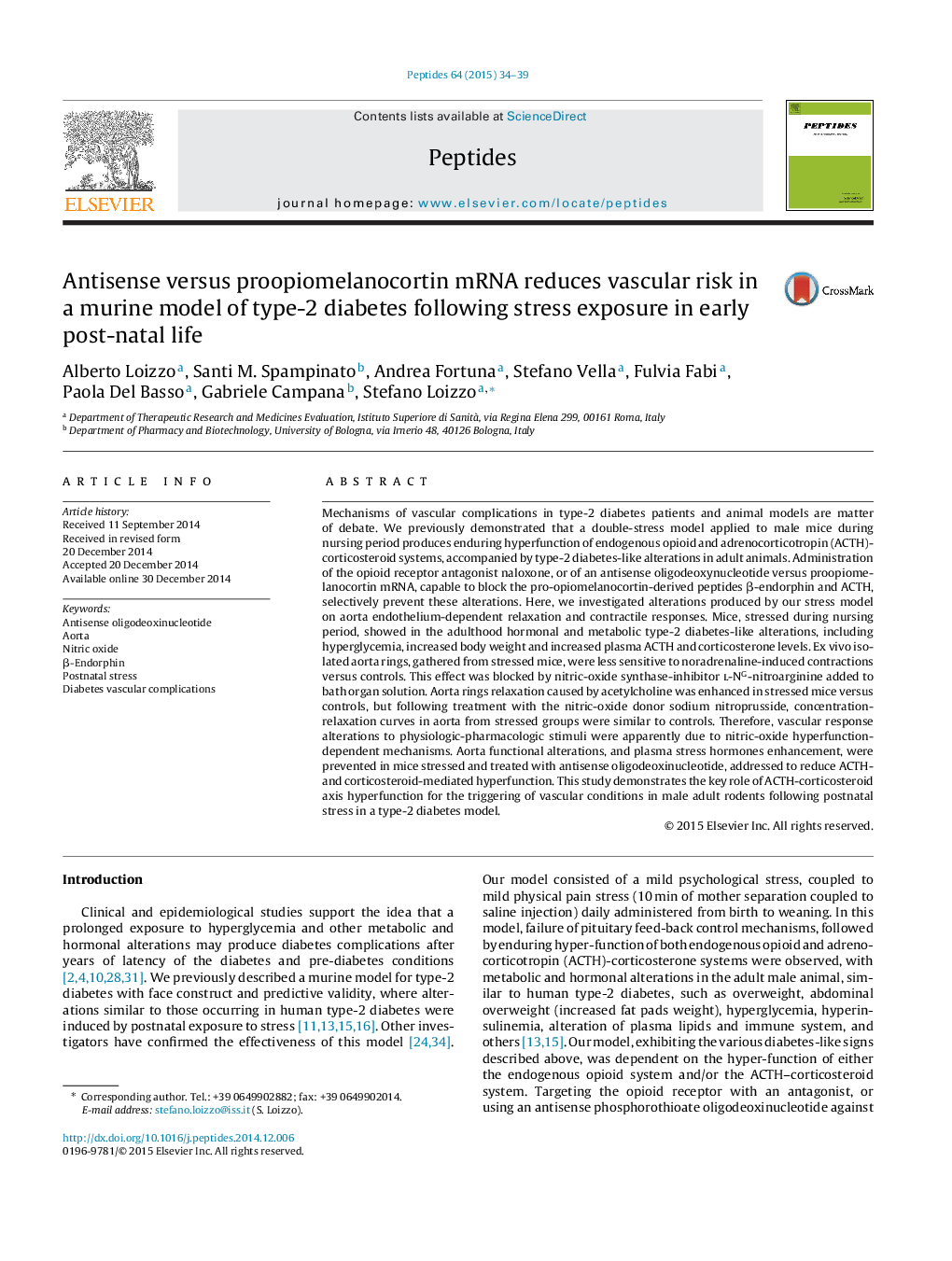| Article ID | Journal | Published Year | Pages | File Type |
|---|---|---|---|---|
| 2005966 | Peptides | 2015 | 6 Pages |
•Postnatal double stress applied to newborn male mice produces a type-2 diabetes model in adults.•The model is accompanied by endogenous ACTH–corticosterone hyperfunction.•Aorta from stressed mice shows altered responses to noradrenaline and acetylcholine tone regulation.•Adult aorta alterations are prevented by postnatal administration of antisense versus proopiomelanocortin mRNA.•Antisense prevents aorta stress damage through ACTH–corticosterone down-regulation.
Mechanisms of vascular complications in type-2 diabetes patients and animal models are matter of debate. We previously demonstrated that a double-stress model applied to male mice during nursing period produces enduring hyperfunction of endogenous opioid and adrenocorticotropin (ACTH)-corticosteroid systems, accompanied by type-2 diabetes-like alterations in adult animals. Administration of the opioid receptor antagonist naloxone, or of an antisense oligodeoxynucleotide versus proopiomelanocortin mRNA, capable to block the pro-opiomelanocortin-derived peptides β-endorphin and ACTH, selectively prevent these alterations. Here, we investigated alterations produced by our stress model on aorta endothelium-dependent relaxation and contractile responses. Mice, stressed during nursing period, showed in the adulthood hormonal and metabolic type-2 diabetes-like alterations, including hyperglycemia, increased body weight and increased plasma ACTH and corticosterone levels. Ex vivo isolated aorta rings, gathered from stressed mice, were less sensitive to noradrenaline-induced contractions versus controls. This effect was blocked by nitric-oxide synthase-inhibitor l-NG-nitroarginine added to bath organ solution. Aorta rings relaxation caused by acetylcholine was enhanced in stressed mice versus controls, but following treatment with the nitric-oxide donor sodium nitroprusside, concentration-relaxation curves in aorta from stressed groups were similar to controls. Therefore, vascular response alterations to physiologic-pharmacologic stimuli were apparently due to nitric-oxide hyperfunction-dependent mechanisms. Aorta functional alterations, and plasma stress hormones enhancement, were prevented in mice stressed and treated with antisense oligodeoxinucleotide, addressed to reduce ACTH- and corticosteroid-mediated hyperfunction. This study demonstrates the key role of ACTH-corticosteroid axis hyperfunction for the triggering of vascular conditions in male adult rodents following postnatal stress in a type-2 diabetes model.
